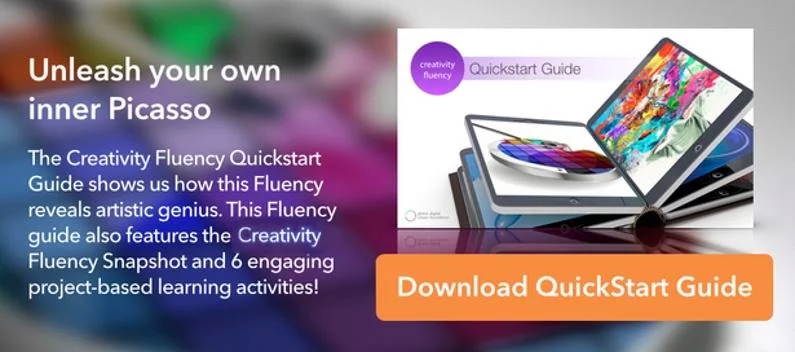How Can We Begin Developing Imagination in Our Older Learners?
Imagination has both driven learning and been the result of it. By developing imagination we expand the mind to receive possibilities in learning. On the other hand, learning causes us to both dream and imagine when we seek to understand more. In the classroom, this is exactly what happens when teaching with imagination becomes the instructional focus. Suffice it to say that imagination and learning go hand in hand.
It seems, though, that as we get older learning becomes more serious. Rather than freeing ourselves to be as imaginative and creative as when we were children, we hold back. Our imagination, as Sir Ken Robinson points out, gets "educated out of us." However, writer and researcher Linda Flanagan has some ideas on how older students can start developing imagination for higher learning once more. She shares them in her MindShift article 8 Ways to Help Older Kids Develop a Sense of Imagination.
Why Developing Imagination Matters
"Imagination might be vital to a clear mind, but it’s not something that’s widely taught or understood, especially among older students," Linda points out. "In a 2007 study of prospective teachers, 68 percent said they believed students needed to focus on memorizing the right answer rather than thinking imaginatively."

As younger children, play and imagination are at the core of learning. Nevertheless, the truth is that as we get older we imagine less and less. Since we know a creative imagination is more important to learning today than ever, it's time to reclaim it. How do we make developing imagination a worthwhile goal for all grade levels?
8 Practices for Developing Imagination in Older Kids
Linda draws on the wisdom of Wendy Ostroff, author of Cultivating Curiosity in K-12 Classrooms, in her article. The following strategies from that book will help more mature students rekindle their imaginations in learning.
- Give them more control: "Allowing students more power over their work can activate their curiosity," Ostroff claims. “They start to crack open when they feel like they’re in charge." Here are some ways to help learners overcome barriers to learning, including "stand aside and guide."
- Have them track their searches: Even when using the Internet, students can still think expansively. Have them pay attention to not only what they search for, but how. Additionally, have them track their tangents. For example, when searching for one thing, what do they actually end up reading about?
- Tell collaborative stories: Collaborative stories or "story trains" are an essential critical thinking and attention exercise. Many other imaginative activities will work the same way. They also exercise active listening, collaboration, and language skills.
- Use improv. "Once the domain of jazz musicians and comedians, improvisation has found its way into businesses and schools," observes Linda. In improv there are no wrong answers or insufficient contributions. Ultimately it's designed to get students thinking on their feet, and is a fun means of developing imagination.
- Introduce real-life experience when possible: Often teachers are expected to put up a front, and this can create a barrier to developing imagination. So relax and open up a little from time to time. Choose some stories to tell about yourself to show students that behind the mask of professionalism is someone just as human as they are.
- Try doodling: An old practice for unlocking imagination is starting to get respect again with good reason. In the book The Doodle Revolution, author Sunni Brown talks about doodling as something to embrace in the classroom. It's a way to express thought, retain knowledge by visual association, and exercise creativity.
- Imagine a “creative council” in the classroom: Linda explains this concept best in her writing. "The council is an imaginary body of visionaries and experts that the students could 'create' and then look to for answers to problems." For example, say they develop an imaginary council of which Abraham Lincoln or Maya Angelou are the primary mediator. How would these historical leaders respond to problems or issues brought before the council? What would they encourage others to do in finding a solution?
- Lighten up. “The message kids are getting in school is that learning isn’t fun,” Ostroff says. To this end, we've discussed the importance of play in learning and how it benefits the mind. Keeping it light makes the idea of settling down to learn more comfortable. Open minds are minds that are eager to learn.
Read 8 Ways to Help Older Kids Develop a Sense of Imagination on MindShift.
Additional Reading
- Why Is Imagination as Important as Knowledge in Education?
- This is Why We Must Be Teaching With Imagination, and How to Do It
- The Future of Education is Unstructured Learning, and Here’s Why

